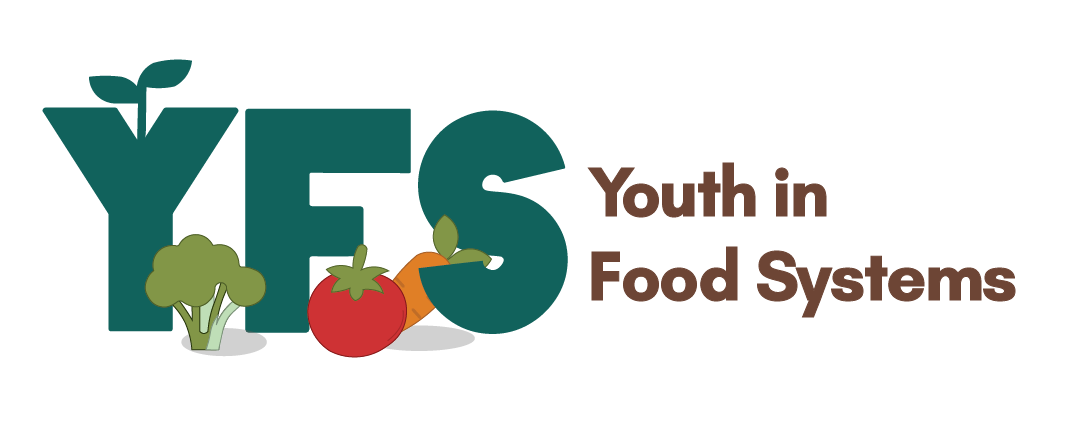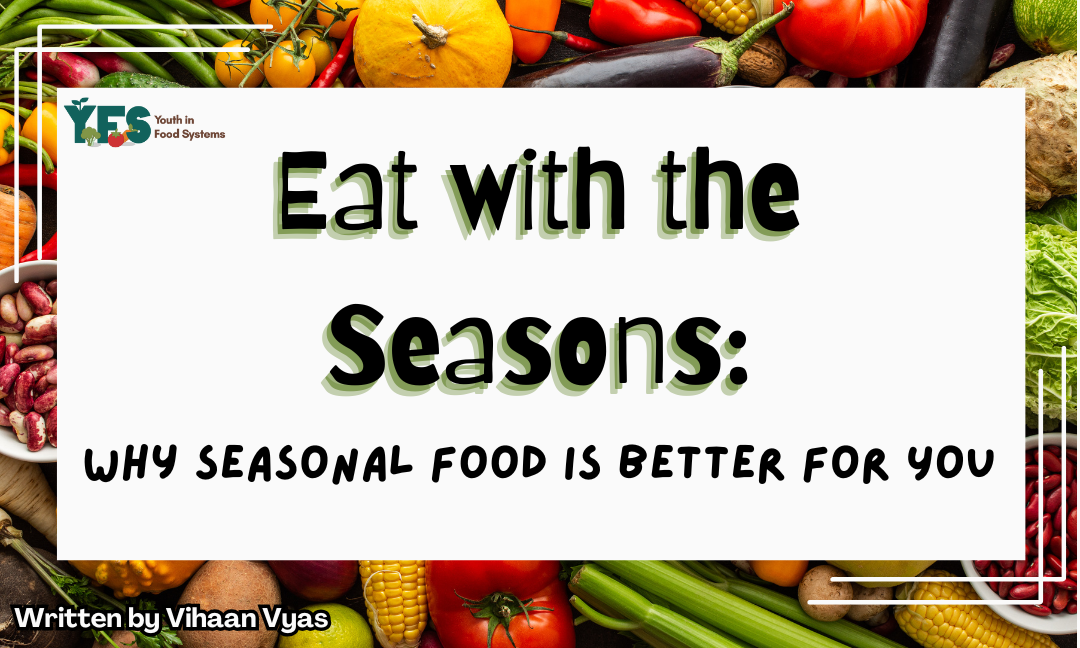Written by: Vihaan Vyas
Edited by: Nicole Majewski
Designed by: Eleanor Jeavons
Published by: Rayna Almas
In today’s world of 24/7 grocery stores and international imports, it’s easy to forget that food naturally grows in cycles. We’ve grown used to the idea of having strawberries in winter, apples in spring, or asparagus year-round. But nature didn’t design it that way – and maybe that’s a good thing. Eating seasonally, meaning choosing foods that are naturally harvested at certain times of the year, isn’t just about following a trend or shopping at farmers’ markets. It’s a simple yet, powerful way to improve your health, enjoy better-tasting food, and support both your local economy and the planet.
Here’s why eating with the seasons is one of the smartest (and tastiest) choices you can make!
1. Seasonal Food Is Fresher and More Flavourful
One of the biggest benefits of eating seasonally is taste. Fruits and vegetables that are in season are typically harvested at their peak ripeness, so they’re packed with natural flavour and texture. Compare a fresh-picked, local summer peach to one shipped from overseas in the middle of January – it really can’t even be compared.
When produce is grown out of season or shipped long distances, it’s often picked too early and then ripened artificially during transport. This not only affects taste, but it can also lead to a dull texture and lower nutritional value. Seasonal food, on the other hand, tastes the way it’s supposed to: crisp apples in the fall, juicy tomatoes in summer, earthy root vegetables in winter. Nature gives us what we need, when we need it.
2. It’s More Nutritious
Fruits and vegetables begin to lose nutrients as soon as they’re harvested. The longer they sit in storage or travel across the globe, the more their vitamin and mineral content declines. Seasonal produce, especially if it’s local, is often harvested shortly before it gets to you – meaning it retains more of all the nutrients your body needs.
Additionally, eating seasonally often means eating a wider variety of produce throughout the year, which helps support a more diverse and balanced diet. You might load up on leafy greens and asparagus in the spring, berries and zucchini in the summer, squash and beets in the fall, and citrus and cabbage in the winter. This natural rotation ensures you’re getting a range of vitamins, antioxidants, and phytonutrients year-round, rather than cramming all the freshest vitamins into one month—or worse, trying to supplement the remaining ones with inauthentic vitamins.
3. It Supports Your Body’s Naturally Changing Needs
Seasonal eating often aligns with what your body needs at different times of year. Think about it: in summer, our bodies crave hydration and lighter foods—for example, high water-content foods like – like cucumbers, tomatoes, and melons, – which are high in water content. In the colder months, we tend to look for hearty foods that provide more energy and help us retain warmth, like hearty, warming foods that provide us warmth, – like potatoes, carrots, and squash – that provide more energy and help us stay warm.
By following the rhythm of the seasons, you’re also supporting your body’s natural cycles. You don’t need to follow a rigid diet plan— – just pay attention to what’s growing around you and trust nature’s timing.
4. It’s Better for the Environment
Eating seasonal often means eating local, – and that’s a win for the environment. Out-of-season produce usually has to be shipped from other countries or grown in energy-intensive greenhouses. That long-distance transport and artificial growing environment sucks uses up fossil fuels, increases greenhouse gas emissions, and contributes to pollution overall.
Seasonal food grown nearby, in comparison, requires fewer resources and creates less waste. When you choose seasonal, you’re also supporting more sustainable agriculture, reducing your carbon footprint, and helping protect biodiversity.
5. It’s Often More Affordable
When a fruit or vegetable is in season, there’s usually a lot of it— – and that abundance brings affordabilityprices down. Supply is high, demand is steady, and there’s less need for storage and shipping. That’s why you’ll often find better deals on seasonal items at your local market or grocery store.
On the flip side, when a food is out of season, there’s much less of it. So, itit costs more to grow or import, and those costs get passed on to you. BySo by eating what’s naturally available, you can often stretch your grocery budget without sacrificing quality.
So next time you’re grocery shopping or planning a meal, take a moment to ask,: What’s in season right now? You may just discoverjustmight discover that the best food isn’t the most exotic or expensive— – it’s the food that nature intended for this very moment.

